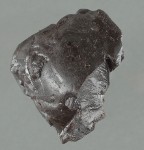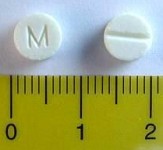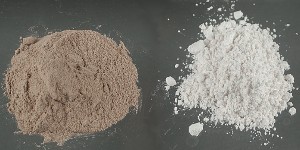

 Opium, morphine, and two varieties of heroin The opiates, derived from the opium poppy (Papaver somniferous), are among the most dangerous drugs in widespread use. They are highly addictive, and withdrawal from them, while possible, is often extremely painful.
Opium: Opium is highly addictive, and addiction occurs rapidly, often within weeks. Users continue to take the drug not only for the intoxication, but to avoid the painful side effects of withdrawal. The effects of opium include:
Morphine: Morphine, which is obtained from raw opium, is a very powerful narcotic analgesic, and its primary medical use is to control severe pain. Morphine is legally available only in the form of morphine sulfate and morphine hydrochloride, which are are fine white powders, bitter to the taste, and usually dispensed in tablet form. Morphine obtained illegally can be taken in a variety of ways ... it can be injected, smoked, sniffed, or swallowed. When injected intravenously, morphine causes intense euphoria and a state of well-being and relaxation. Repeated use results in a rapid development of tolerance, as well as physical and psychological dependence. Its effects on the body when used repeatedly and in larger and larger doses are similar to those of opium, above. Heroin: Heroin is processed from morphine, and is usually a white or brown powder. Street names for heroin include 'smack', 'H', and 'junk'. The immediate effects of heroin use include euphoria, a warm flushing of the skin, a dry mouth, and heavy extremities. These effects appear soon after taking the drug, (usually by injection), and disappear in a few hours, to be followed by a drowsy state where the user's mental functioning becomes fuzzy due to the depression of the central nervous system. Heroin use results in some serious health problems, including the possibility of a fatal overdose, spontaneous abortion, collapsed veins, and infectious diseases, including HIV/AIDS and hepatitis. Long-term users may also develop infection of the heart, abscesses, and liver disease. As well as the effects of the drug itself, heroin often has chemicals added to it that do not easily dissolve, and which cause clogging of the blood vessels that lead to the lungs, liver, kidneys, or brain. This can result in infection or organ damage. With repeated heroin use, as with most drugs, tolerance develops. As larger quantities of the drug are used, physical dependence and addiction occur. Withdrawal symptoms, which for regular users can occur just a few hours after the last dose, include intense drug craving, restlessness, muscle and bone pain, insomnia, diarrhea and vomiting, and kicking movements. These symptoms last about a week. Methadone, a synthetic opiate, blocks the effects of heroin for about 24 hours, and has been used successfully to help addicts stop using heroin. |